People in Japan above the age of twenty may legally purchase and smoke cigarettes or other nicotine products in the designated smoking zones. The places where you can smoke are limited but accessibility is extensive. You can purchase cigarettes from stores and sidewalk vending machines.
Despite the high accessibility of cigarettes in Japan, the number of people who smoke is on the decline thanks to the Ministry of Health’s efforts to decrease smoking among the Japanese population.
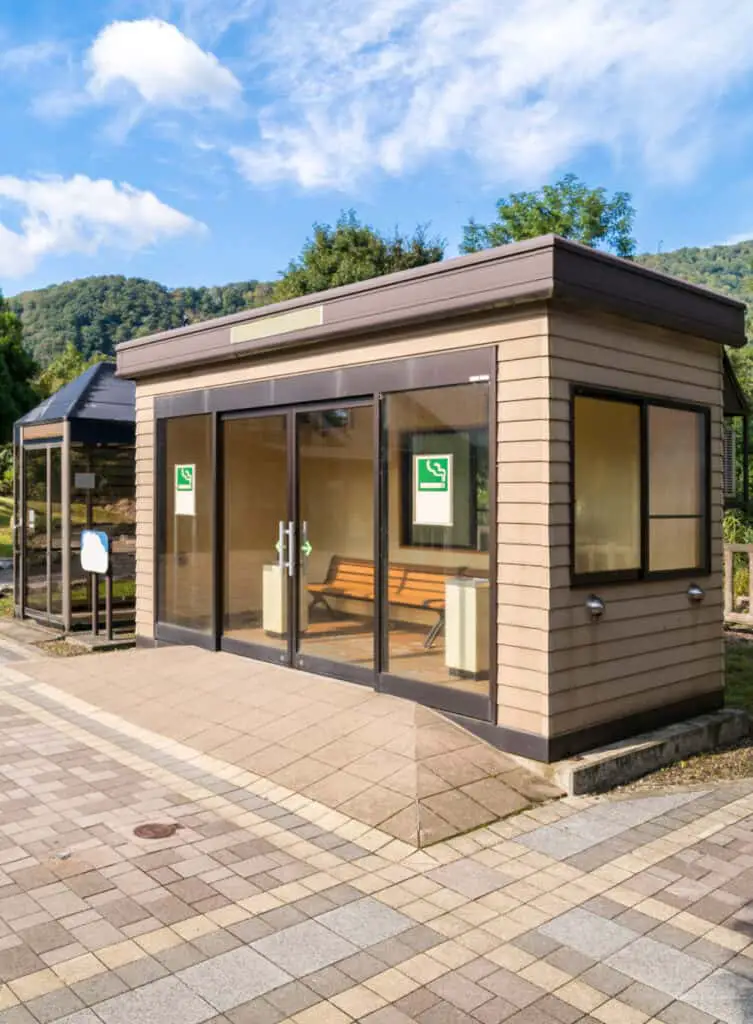
After the Tobacco Business Act, there have been several restrictions placed on smoking and using tobacco. These restrictions include the advertisements and usage of tobacco products in public places, like restaurants and parks.
Smoking in Japan
It is legal for people above twenty to purchase and smoke cigarettes or tobacco in Japan. Smoking tobacco is readily available across Japan, but the indoor smoking bans mean that the places where you may smoke them are limited.
For instance, smoking inside public venues and establishments is illegal. Smoking tobacco is classified as any tobacco product containing nicotine, which produces smoke.
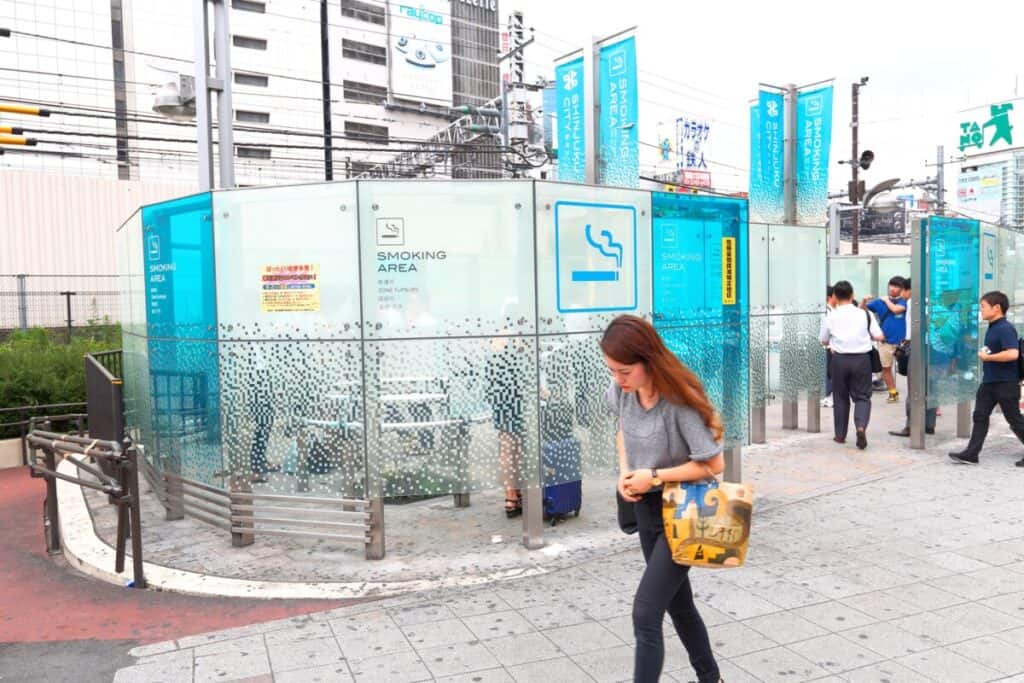
There are many types of smoking products that you can purchase in Japan, including cigarettes and cigars. Other tobacco-based products may not produce smoke, which makes them more eco-friendly.
Smokeless, heated tobacco products include e-cigarettes. These are not monitored as closely but are still loosely restricted under the Ministry of Health.
The Tobacco Business Act has placed numerous restrictions on public smoking indoors and outdoors. Strict laws, which can implement hefty fines for disobeying, have been implemented since April of 2020 to reprimand any business owners who allow indoor smoking.
How To Buy Smoking Tobacco in Japan
There are many types of smoking tobacco products in Japan. All smoking products are available for purchase to people over the age of twenty. You can purchase these at designated stores and special vending machines.
The most common smoking tobacco products are cigarettes and cigars. These tobacco products are available at every convenience store and nearly every street corner in busy cities like Tokyo. However, it is not legal to smoke them openly on the streets.
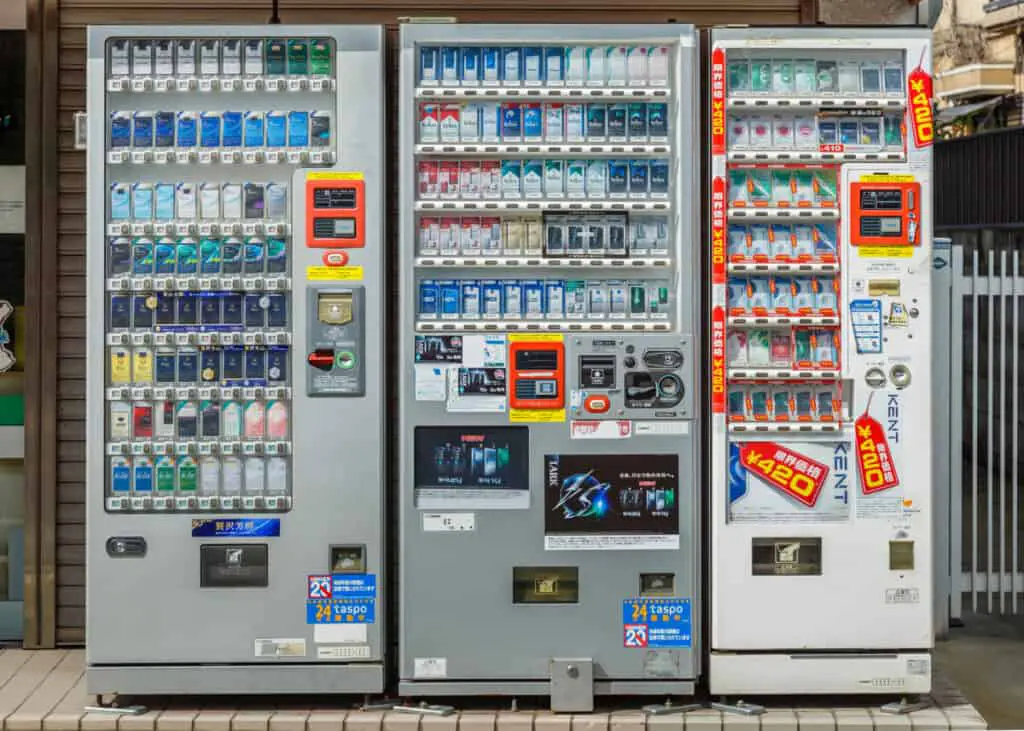
Purchasing Cigarettes in Japan
Cigarettes are smoking products any person over the age of twenty can purchase in tobacco stores or convenience stores for around ¥450 to ¥570 per pack.
You can also purchase cigarettes or cigars from vending machines. To use a vending machine, you must verify your age with a TASPO photo identification card.
A frequent cigarette smoker can apply for one of these convenient cards for free at any tobacco retailer.
TASPO Photo ID Application Website
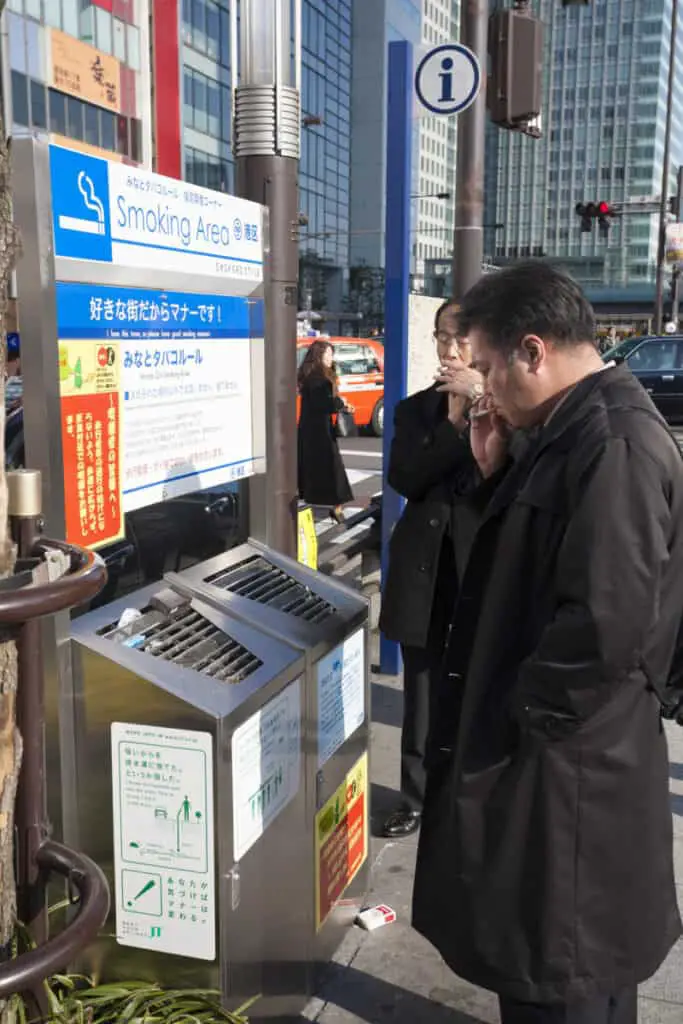
Some people consider TASPO cards a more convenient option since there is often little wait time. Plus, you may load a balance onto your card and use it as a debit card. Quick transactions speed the process along.
Purchasing cigarettes in Japan costs three times higher than smokeless tobacco products. The high expense of cigarettes is why some people encourage smokers to convert to electronic cigarettes.
Electronic cigarettes come in traditional cigarette cartridges, which blow a large amounts of smoke or vapor. Others are flavorful vapors that do not produce any visible smoke. Purchasing cigarettes in Japan costs three times higher than smokeless tobacco products.
Purchasing Smokeless Electronic Cigarettes (Vapes) in Japan
Electronic cigarettes, also known as vapes, are a type of smokeless tobacco product. These electronic cigarettes have the same nicotine as regular cigarettes, so they are considered a pharmaceutical product.
For that reason, people cannot legally smoke nicotine-filled vapes while in Japan.
Instead, people will smoke nicotine-free vapor juice. Smoking nicotine-free liquids mean that technically, electronic cigarette users are legally allowed to smoke inside non-smoking establishments.
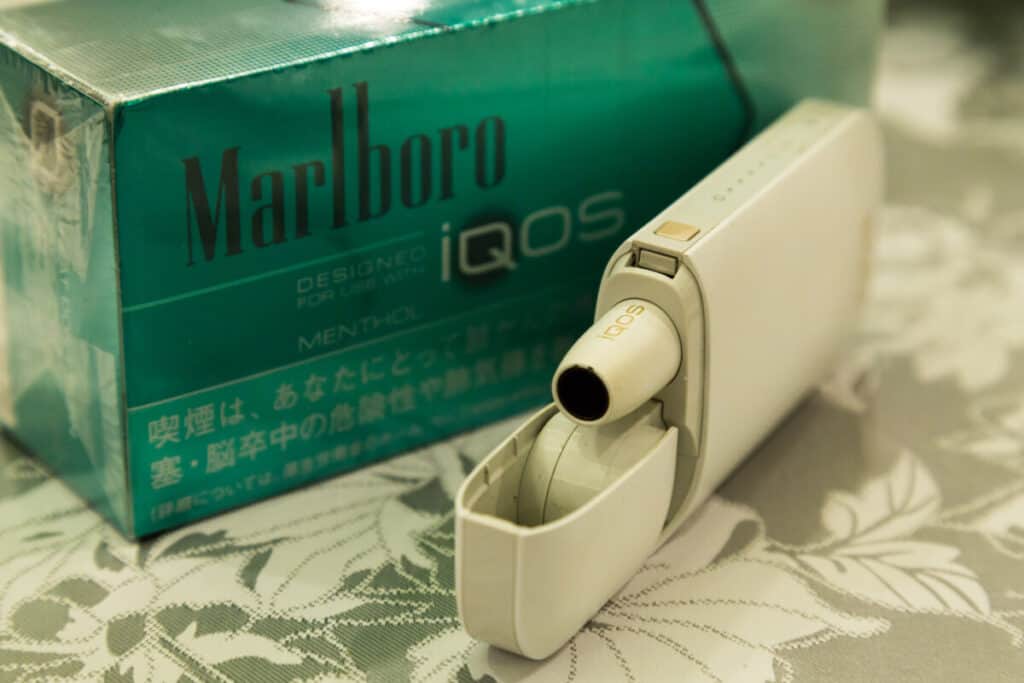
There are several vape stores in Tokyo, which you may purchase nicotine-free vapor juice. Since none of these stores sell nicotine juice, these electronic devices are not limited under the Tobacco Business Act unless you try smuggling in nicotine juice.
The only acceptable way to use nicotine liquids in an electronic cigarette is by arranging a medicinal prescription with your pharmacist. You may purchase 120 milliliters once a month for personal use.
People whose electronic cigarettes produce vapor can smoke in more public areas.
Where to Smoke Cigarettes in Japan
Nearly all public buildings have indoor smoking bans. Japanese law forbids people from smoking inside izakayas, restaurants, and other public buildings. The indoor smoking ban means smokers must use one of the many designated outdoor smoking spaces.
Although smoking electronic cigarettes indoors is not illegal, many Japanese restaurants and bars restrict smokers from using these devices. If your electronic cigarette is pure vapor, then you may have more free reign.
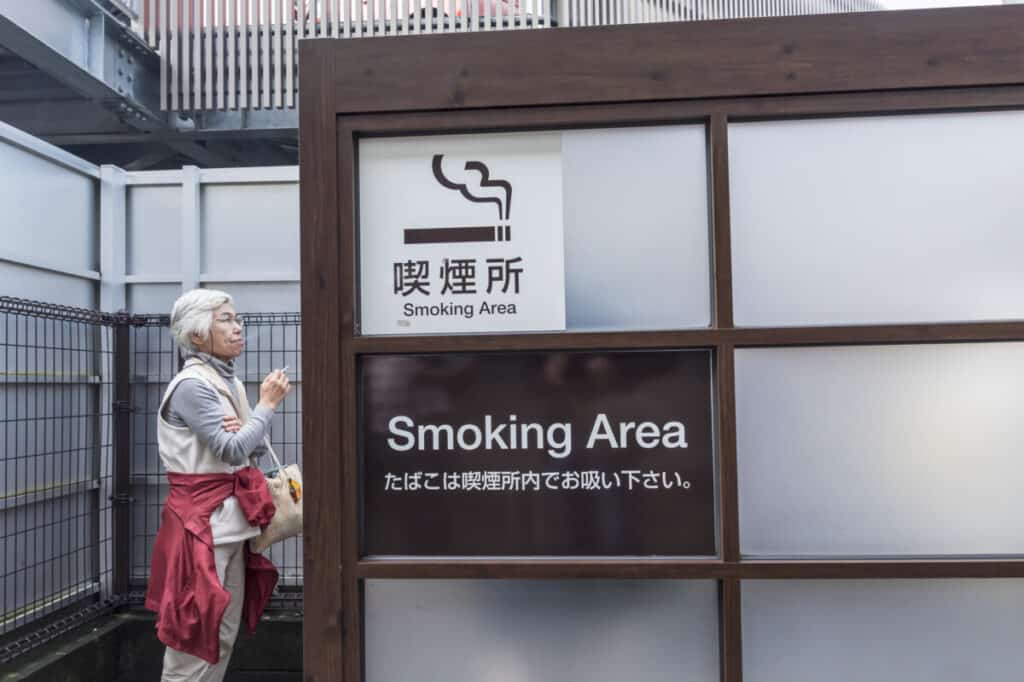
Outdoor smoking is limited to designated smoking areas. People are not permitted to smoke on busy streets, public transport, or other crowded areas. Smoking in public areas puts other people’s health at risk.
Outdoor smoking areas are secluded from main pathways, so non-smokers are not exposed to secondhand smoke. These smoking areas typically provide smokers with seating, coverage, and plenty of disposal options. In many cases, these smoking areas are also scenic and well-decorated to provide a pleasant view as you take a break.
What is the History of Smoking in Japan?
People began smoking tobacco in Japan in the 1500s when it was introduced to the Japanese by Europeans. It was instantly popular and the first wind of Japan’s major technological evolution.
Instantly following the introduction of tobacco, the Japanese crafted the kiseru. This unique smoking device was a long-necked pipe that evenly burned tobacco.
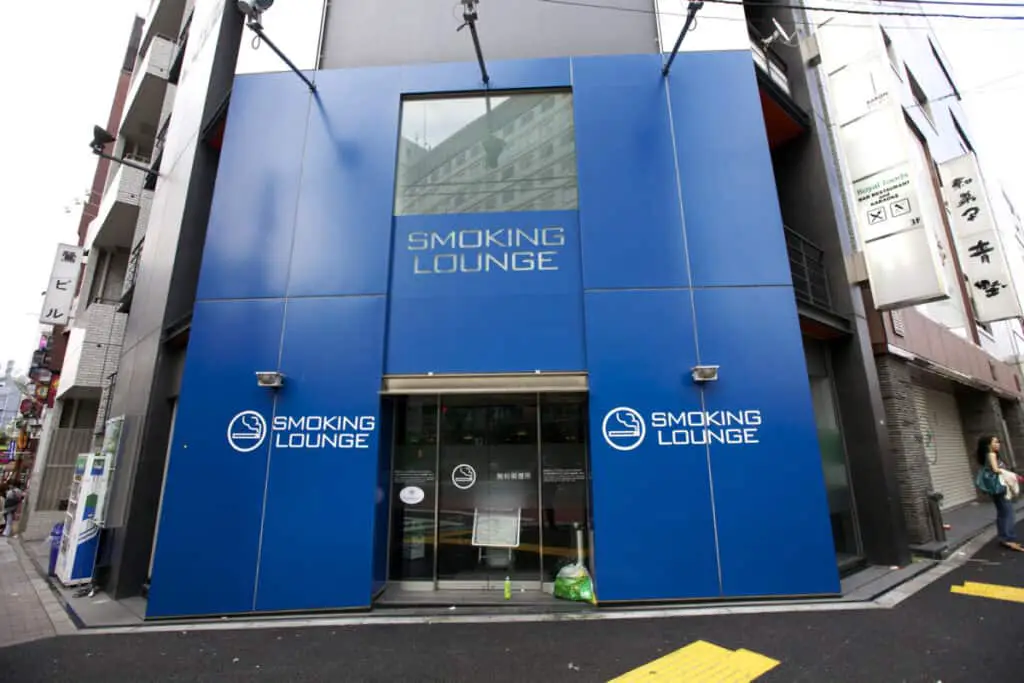
Many early woodblock art pieces like E-Goyomi (Lady Smoking) by Korinsai showcase this work. E-Goyomi was a piece made between 1785 and 1790, which showed a woman smoking from the long Japanese smoking pipe, the kiseru. This piece of art was a prime example of how smoking was influential in early Japan.
In 1876, the Ministry of Health set the legal smoking age to twenty years old. This age has been the standard for over a century and continues to remain the standard for legal smoking.
The usage of tobacco was ongoing until roughly 1996 when anti-smoking initiatives began influencing people to stop smoking. Newer generations have been warned more frequently about the ill side-effects that come from smoking tobacco products.
By 2002, Japan introduced vending machines to the market. Six years later, in 2008, the Japanese Vending Machine Manufacturer’s Association upgraded all cigarette vending machines to include TASPO compatibility. The TASPO upgrade required every vending machine patron to purchase a card so they could use the vending machines.
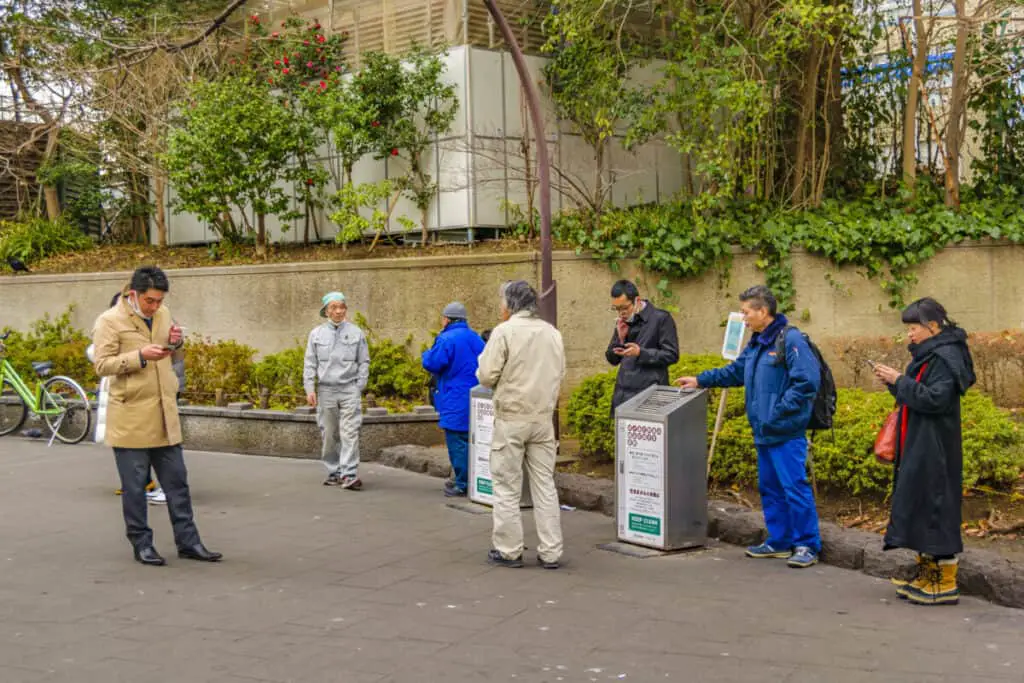
In June of 2018, the Ministry of Health implemented a strict ban on indoor smoking inside commercial buildings in Tokyo. The Ministry of Health implemented the indoor smoking ban in preparation for the 2020 Summer Olympics.
Japan limited indoor smoking before the Olympic games to regulate passive smoking. Passive smoking, also known as secondhand smoking, is harmful to people in the same environment as smokers. By July 2018, Japan proposed a Nationwide ban on smoking indoors.
In April of 2020, the Japanese Ministry of Health successfully banned smoking indoors. Businesses like bars, restaurants, and other indoor facilities are not permitted to allow indoor smoking. The objective of this law was to influence better health and decrease tobacco use.
Smoking Bans
The Japanese government introduced a health initiative called the Tobacco Business Act, which limits tobacco usage. After 2020, businesses and commercial buildings were required to regulate indoor smoking.
All buildings limiting tobacco use were required to display signs inside and outside of their buildings that indicated their smoking policies.
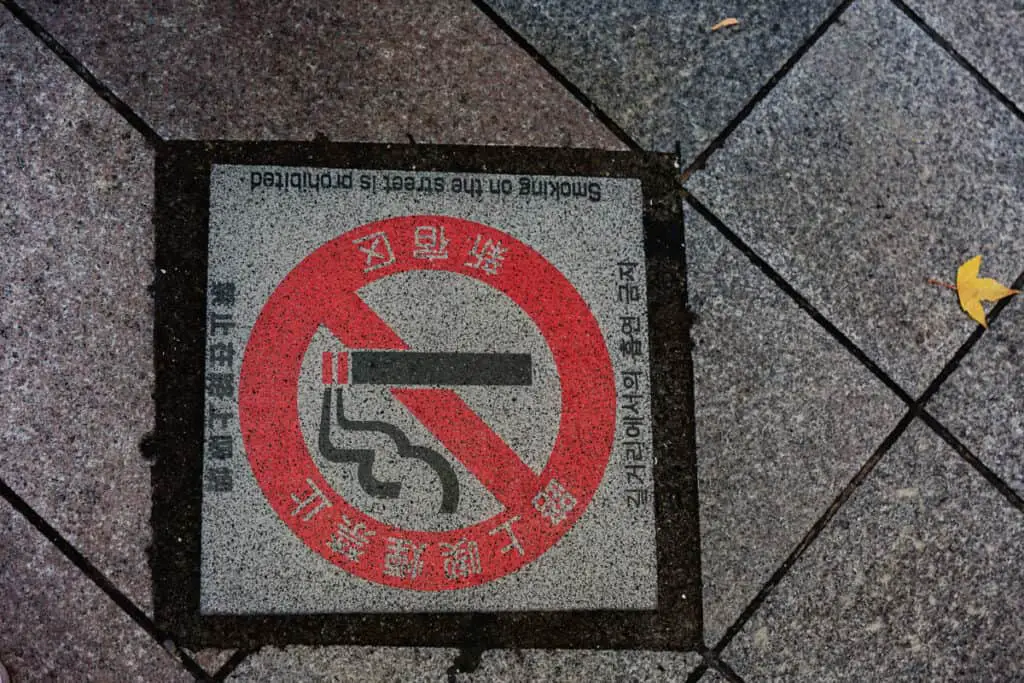
The Ministry of Health also implemented other regulations with the Tobacco Business Act, including serving age, smoking areas, and more.
The Ministry of Health has restricted the age of servers to 19 years old in places that do permit smoking. Any business that does not obey this law may face a fine of nearly $3000.
According to the Japanese Ministry of Health, almost 90% of commercial and service buildings are smoke-free. These buildings use discretion when deciding whether to permit electronic cigarettes in their establishment.
The Ministry of Health banned public smoking in the following places:
- Public transportation (trains, buses, airplanes, etc.)
- Retailers (shopping malls, markets, etc.)
- Food (bars, restaurants, supermarkets, etc.)
- Parks and public spaces
- Public institutions (schools, hospitals, government buildings, etc.)
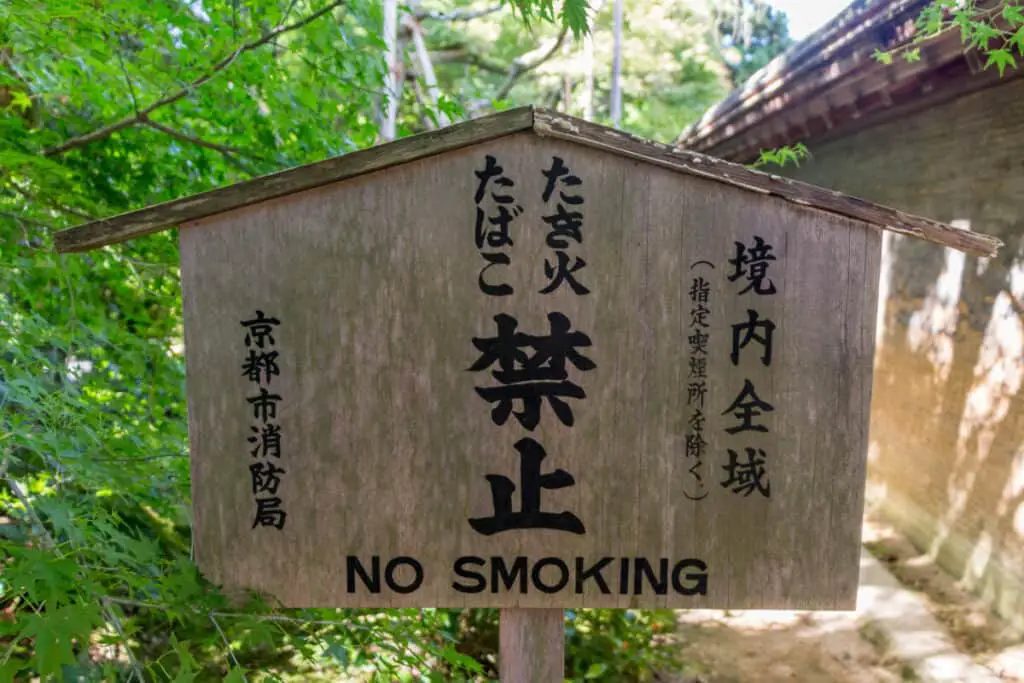
Other examples include hot spring spas, entertainment facilities, or workplaces. In some cases, pubs or restaurants can permit smoking if they do not serve food. They may also designate smoking spaces, given they provide visible warning signs.
Following the mandatory smoking bans, there was a decrease in smoking for men and women. Today, most people who smoke are over the age of 60. As new generations reach the smoking age, the demand for cigarettes and other tobacco products in Japan decreases.










